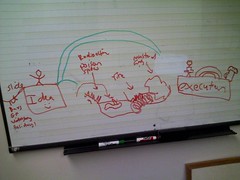When it comes to understanding the digital footprint of your consumers, it can be easy to become exasperated. Not only are there hundreds of Web 2.0 sites, the people who use them appear to be ever-more fragmented into smaller and smaller niches.
Yet despite this fragmentation, social networking sites should be considered gateways that help aggregate content and provide a useful method of contextualising consumer experience. A recent study by Anderson Analytics shows that there are clear age demographic related uses for each of the main social networking sites such as LinkedIn, Facebook, Twitter and MySpace:
The study suggests that advertisers looking to connect through social networks will likely find consumers ages 15 to 24 on MySpace, versus 18 to 34 on Facebook, 15 to 34 on Twitter, and 18 to 44 on LinkedIn, according to Anderson.
Now, if we cross-reference this data with the Forrester data about how people participate in social networking sites, suddenly we find that this data begins to make sense for those of us who have to plan and execute digital strategies.
For example, if we are focusing on those in the 65+ age group, we obviously need to look at Facebook. But we also know that this age group are spectators and critics – so when we begin to think through HOW we engage them, applications that allow for ratings, reviews and short comments are likely to win over applications that require content creation.
Of course, if you are just hoping to target those 15 year old entrepreneurs, cross pollinating LinkedIn and MySpace could well deliver you a lucrative niche. Hmmm … maybe that should be my next incarnation for SocialMediaJobs.com.au!






